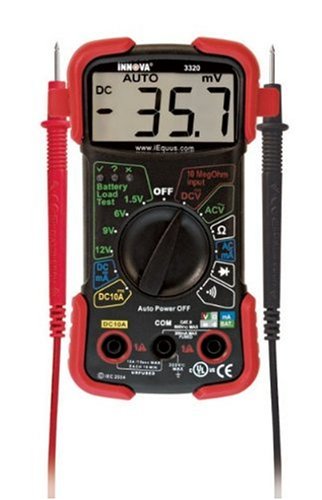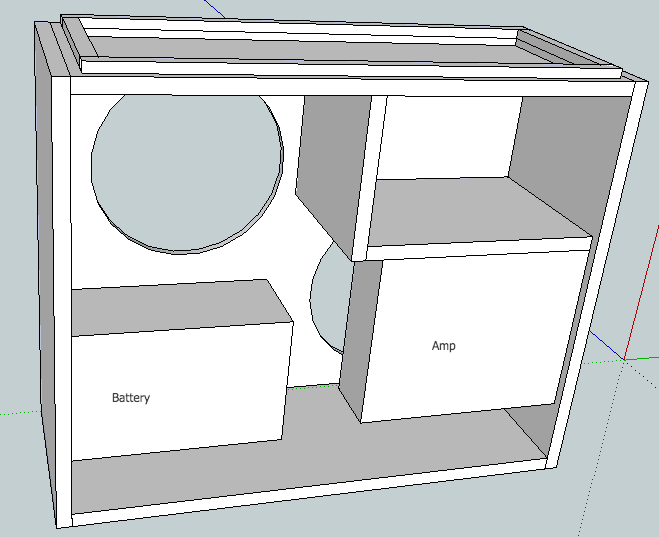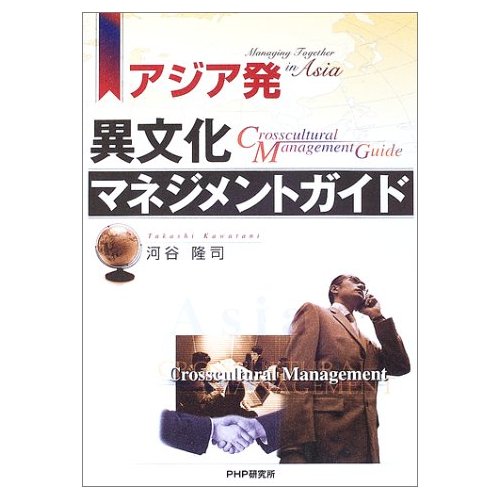The Cross-Cultural Management Guide from AsiaAuthor: Takashi Kawatani
Publisher: PHP Institute
Release Date: Nov 2003
Format: Paperback
The author, Takashi Kawatani, is a specialist who has been teaching cross-cultural management to Japanese businesses in China and ASEAN (Association of Southeast Asian Nations) Countries for many years. The author used survey results to create fictional crosstalk between Asian managers and Japanese Bosses, and the results are particularly interesting. This is because it appears to indicate that the corporate slave is a direct result of so-called Japanese-style management. It's a bit long, but I'll directly quote the book below.
In regards to the theme "Drawing Plans for the Future," Asian managers had the following comments:
"I Want You to Express Your Expectations and Objectives"
“Please explain what must be done to achieve our goals (requirements), what you want us to do (expectations), and the direction and objectives you're aiming for (expectation), not just numerical goals to meet. Telling us how to do this with detailed step-by-step instructions is welcome and helpful.
In the past, there have been employees who have quit because the Japanese management does not have clear goals.
Having to set our own goals because we're not being given enough direction is something even us management level employees are not accustomed to.
The company president should focus on spreading the company's culture, and sharing the company's mission with all employees.”
The Japanese boss responds to this in the following way: (Like I mentioned, this is crosstalk, so naturally the two conversations do not mesh.)
"Think About the Intentions of the President"
“I really want to come up with a way to give clear instructions. But I think rather than waiting until these orders arrive, it is the work of a manager to think for themselves about what they should be doing. I want you to look at the big picture of everything, and learn to be able to make decisions on a higher level. Don't fixate on your own narrow area of responsibility while ignoring the circumstances of the company as a whole.
I want you to become sensitive to the profits and trends of all departments, and become the driving force that pulls this company and its management together.
I want you to make all decisions by putting yourself in the standpoint of a manager.”
Wow, this is really amazing. We've all seen Japanese bosses like this, haven't we? The Foreigner NEET mentioned above would surely write this boss off as your typical company slave. I feel like the Japanese companies contracting with these IT development companies from other countries are generally saying the following:
- "I want you to make all decisions by putting yourself in the standpoint of a manager.”
This really highlights the essence of Japanese-style management: that every employee should carry out their job at the company with the intentions of a manager. Employees shouldn't ask questions, but instead make presumptions. Instead of having others teach you working techniques, steal these techniques from other employees. Even if their positions at the company are relatively low, it's easy to understand why, these corporate slaves look at their surroundings through the eyes of a manager and press forward, toiling away to the point of severe overwork.
- "Don't fixate on your own narrow area of responsibility while ignoring the circumstances of the company as a whole."
By telling their workers to not "fixate too much on your own small area of responsibility and overlook the circumstances of the company as a whole,"
Japanese companies are causing this problem by ignoring the need to effectively share responsibilities. It's as if each person doesn't have any predefined area of responsibility. In a real emergency situation, it's natural to have all employees come together to deal with the problem at hand. But because Japanese companies deal with every request a customer makes even on a whim as an emergency situation, this kind of "social overtime" continues to be a problem.
Japanese bosses tell their employees "Think about the company 24/7. If you can put yourself in the shoes of a manager, it should become clear what you should do. Therefore, there's no need for me to give you detailed instructions." In contrast to this way of thinking, the managers in Asian companies are saying "We're struggling to serve more than a single purpose at the company. In order In order to function better, the boss must set clear goals.“
By the way, the way of thinking for western managers is almost identical to that of Asian managers. To them, orders from the boss are everything, and they don't think about the company in a wider perspective very much. Also, carrying out the tasks in your own area of responsibility is considered to be sufficient.
At a glance, from a manager's viewport, a Japanese boss might even seem ideal. But the problem is that seeing things from the standpoint of a manager is easier said than done. To begin with, the employees at the bottom of an organization's hierarchy aren't in a position where they are receiving the kind of company-wide information they need to be able to take a commanding view of the situation. In that position, if they are told to "behave like a manager," it's likely that the only way they can answer this request is to toil away working endless overtime.
Furthermore, it's ridiculous to ask these low-level employees who receive low levels of compensation to work in the same fashion as highly compensated managers. Due to the lifetime employment system and the seniority system in place in Japan, when employees are young, they have to work hard but are compensated poorly. But long-term employees are rewarded when they middle-aged when their work not only becomes easier, but their salary increases dramatically. Most likely If the lifetime employment system were to go away, the motivation for young workers to slave away at their jobs would completely disappear.
Of course, the Japanese boss' way of thinking is only effective inside of working environments that employ the lifetime employment system and seniority system. But unfortunately, when it comes to working together with external people with different values (such as specialists and foreigners) this way of thinking does not work very well.
(Bonus) Looking at Japanese-Style Management from a Software Engineering Perspective
In the western style of management (as well as in Asia), the areas of responsibility for every department, as well as how these departments interface with each other, is clearly defined. Each employee or department etc can be though of as a module, in the way of the programming concept of a class, where the implementation is encapsulated and thus independent of other modules. And the system is able to work as a whole thanks to this loose coupling of many independent modules.
In Japanese companies, each employee or department's responsibility and interfaces with other departments are not clearly defined, and each module references other module's private variables. In other words, the modules are tightly coupled. This becomes a big hindrance when you want revise business workflows or do outsourcing.
In software engineering, loose-coupling is thought to be more desirable than tight-coupling. In a loosely-coupled system, there is a small, fixed amount of overhead created by the interface, but in exchange for that modules can be treated as independent parts, making the code simpler, and improving maintainability. So this enables the programmers to be more effective when replacing code and responding to changes in specifications.
I think it might be interesting to think on through these points more thoroughly in the future."























